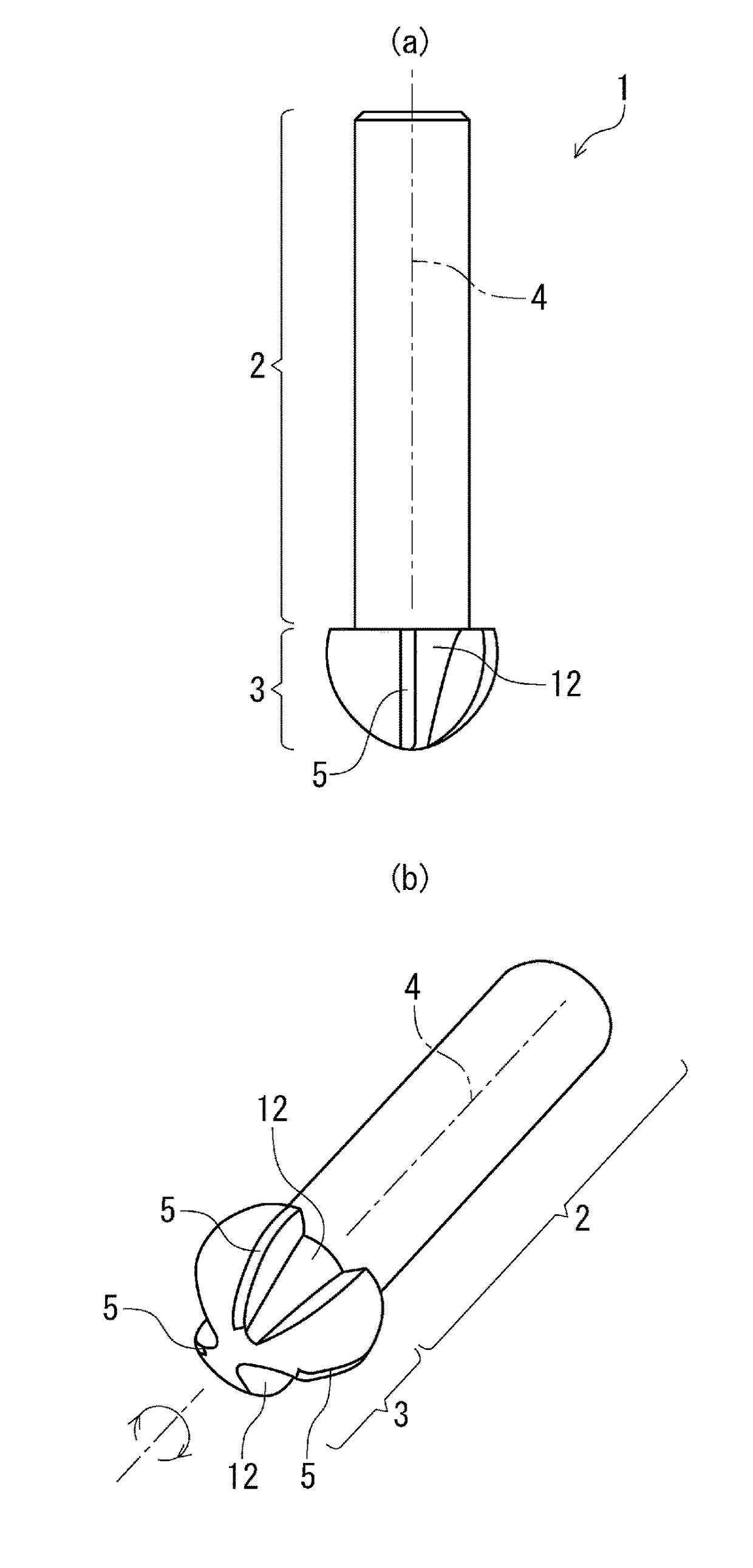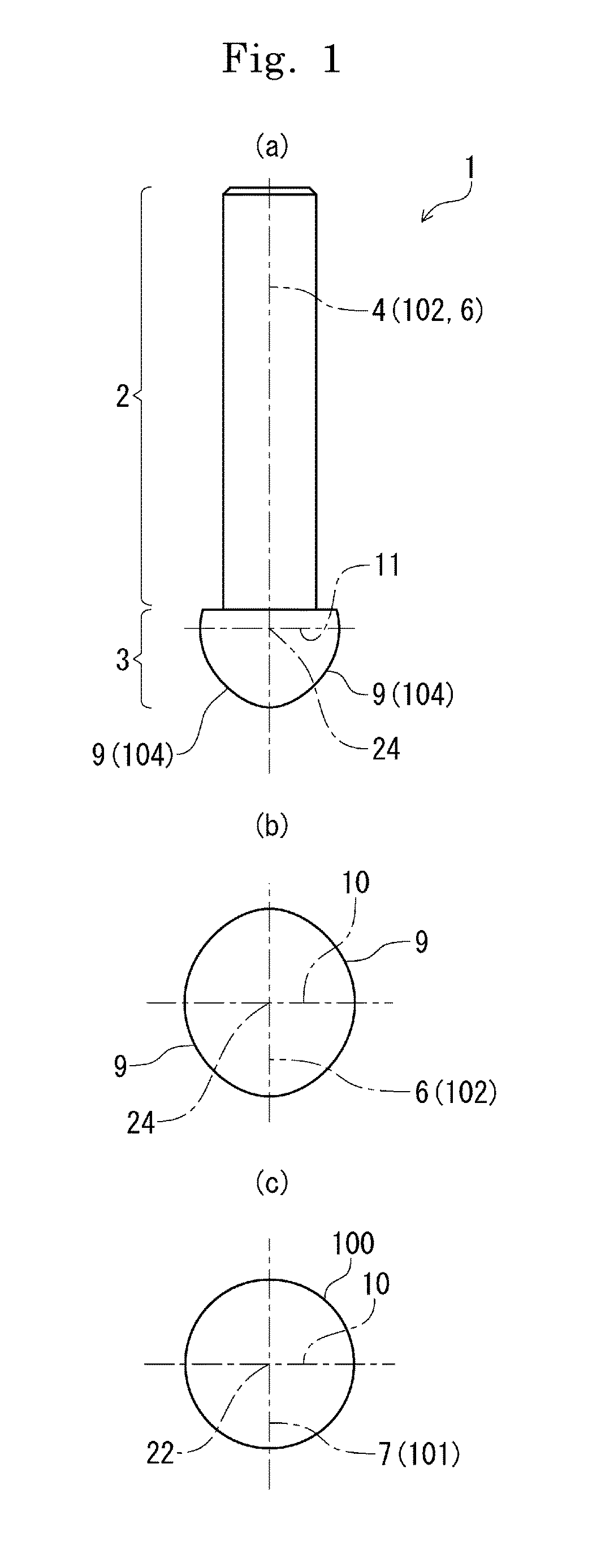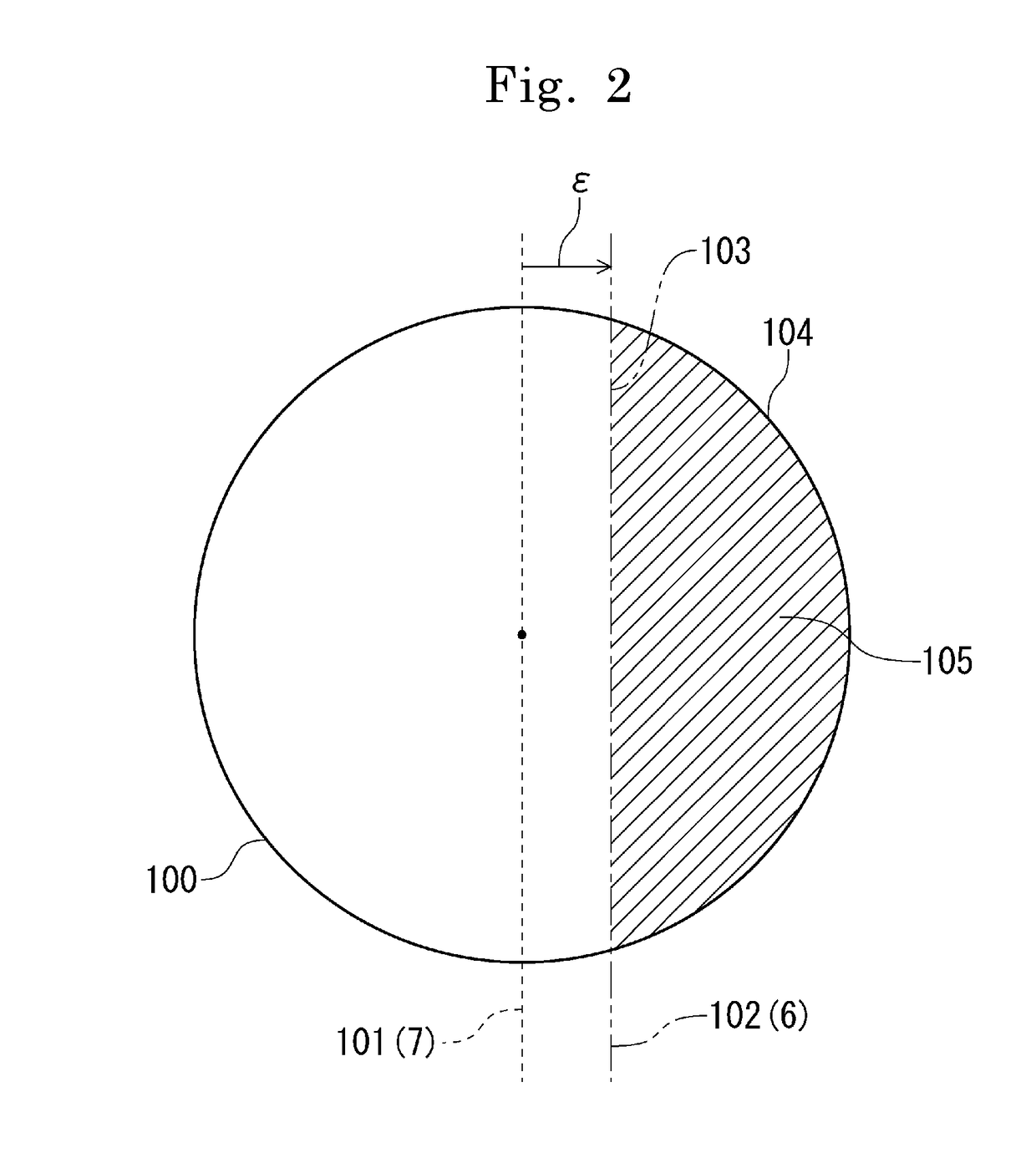Cross hole deburring tool, cross hole deburring method, and rotary valve machined by using the same
a cross-hole deburring and tool technology, applied in the field of cross-hole deburring tools, cross-hole deburring methods, rotary valves machined, can solve the problems of uniform machined surfaces, difficult deburring machining, and operator injuries, and achieve the effect of improving the mass-productivity of the tool main body, simple structure and uniform surface width
- Summary
- Abstract
- Description
- Claims
- Application Information
AI Technical Summary
Benefits of technology
Problems solved by technology
Method used
Image
Examples
Embodiment Construction
[0051]In the following, preferred embodiments of the cross hole deburring tool, cross hole deburring method, and rotary valve machined by using the same of the present invention are described in detail based on the drawings.
[0052]In FIG. 1, (a) is a side surface outer shape view of a tool main body 1, which is an example of the cross hole deburring tool according to the present invention, (b) is a side surface outer shape view of a bow-shaped solid of revolution depicting the shape of a tip part, and (c) is a side surface outer shape view of a sphere, that is, a perfect circle.
[0053]In FIG. 1(a), the tool main body 1 includes a shank 2 on a cylindrical base end side in an axial direction and a tip part 3 on a tip side in the axial direction for performing rotary cutting. In the drawing, with an upper side as a base end side, the tool is rotatably held to a main shaft of a machine tool or the like by taking a rotation axis 4 as a shaft center, and performs deburring by subjecting a w...
PUM
| Property | Measurement | Unit |
|---|---|---|
| diameter | aaaaa | aaaaa |
| width | aaaaa | aaaaa |
| shape | aaaaa | aaaaa |
Abstract
Description
Claims
Application Information
 Login to View More
Login to View More - R&D
- Intellectual Property
- Life Sciences
- Materials
- Tech Scout
- Unparalleled Data Quality
- Higher Quality Content
- 60% Fewer Hallucinations
Browse by: Latest US Patents, China's latest patents, Technical Efficacy Thesaurus, Application Domain, Technology Topic, Popular Technical Reports.
© 2025 PatSnap. All rights reserved.Legal|Privacy policy|Modern Slavery Act Transparency Statement|Sitemap|About US| Contact US: help@patsnap.com



